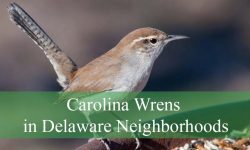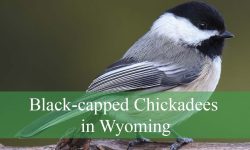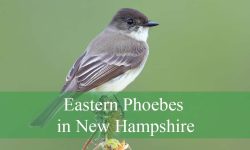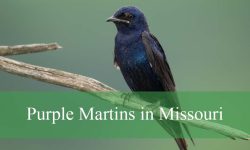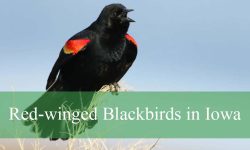North Dakota might not be widely known for its hummingbirds, yet these tiny, jewel-like birds can be spotted across the state during the warmer months. Birders often find great joy in watching their swift movements and dazzling colors.
The Ruby-throated Hummingbird is the only species that breeds here regularly, bringing energy to gardens and woodlands each summer. In addition, rare migrants such as the Rufous, Calliope, Broad-tailed, and Black-chinned Hummingbirds appear from time to time, adding excitement for birdwatchers.
From backyard feeders filled with sugar water to wildflower-rich prairies and river valleys, hummingbirds bring a touch of brilliance to North Dakota skies. Spotting them is a rewarding experience for anyone who appreciates the beauty of nature.
Types of Hummingbirds Found in North Dakota
Ruby-throated Hummingbird (Archilochus colubris)
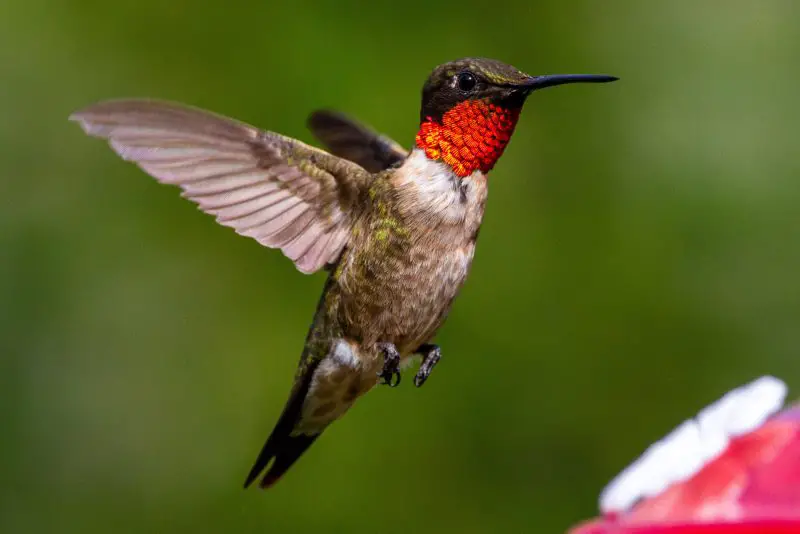
The Ruby-throated Hummingbird is the only hummingbird species that regularly breeds in North Dakota, making it the state’s most familiar representative of the family. Males are best recognized by their shimmering ruby-red throats, which appear black in low light but glow when struck by the sun. Females lack the red throat, instead displaying a white chest and greenish back. Both sexes have slender, slightly curved bills and iridescent feathers that sparkle in sunlight.
This species is small, measuring about 3 to 3.5 inches in length with a wingspan of 3 to 4 inches. Their rapid wingbeats, up to 50 per second, allow them to hover with precision while feeding on nectar. In flight, they produce a faint hum that gives the family its common name. Despite their size, they are aggressive defenders of food sources and will chase away larger birds from feeders and flower patches.
Ruby-throated Hummingbirds are migratory, spending their breeding season in North Dakota and other parts of the eastern and central United States. They prefer gardens, meadows, and woodland edges where nectar-rich flowers are abundant. Their diet consists primarily of flower nectar, but they also feed on small insects and spiders for protein, especially when raising young.
In North Dakota, these hummingbirds arrive in late spring, usually in May, and remain through the summer months. They are most often observed visiting feeders stocked with sugar water or flitting between native wildflowers. By early fall, typically September, they begin their long migration to Central America, with some individuals crossing the Gulf of Mexico in a nonstop flight.
Rufous Hummingbird (Selasphorus rufus)
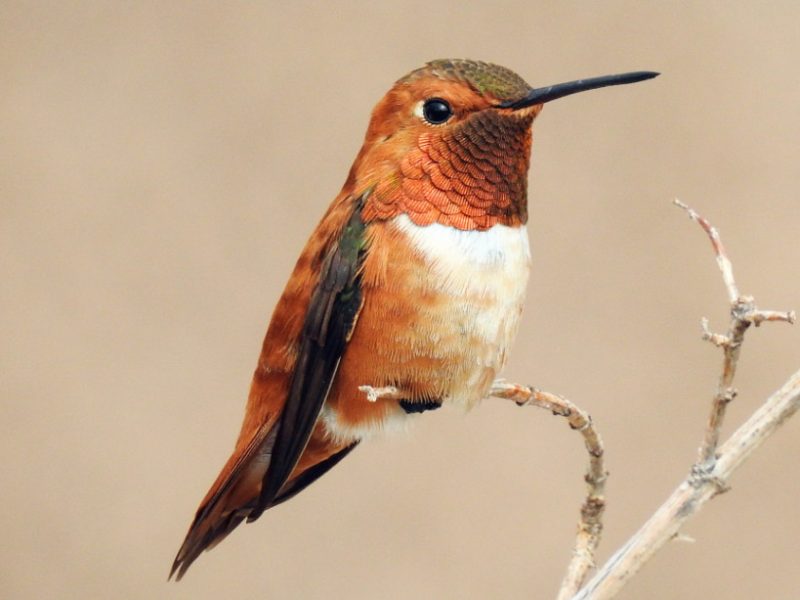
The Rufous Hummingbird is a striking but rare migrant in North Dakota, most often appearing during late summer and early fall migration. Males are easily identified by their fiery orange-red plumage with a gleaming red throat, while females and juveniles have greenish backs with rufous sides and tails. Their bold coloration and energetic nature make them stand out among other hummingbird visitors.
They are slightly smaller than Ruby-throated Hummingbirds, measuring about 3 inches long with a wingspan of 4 inches. Despite their size, they are famously aggressive and territorial, often chasing away other hummingbirds and even larger birds from feeders. Their flight is fast and direct, with sharp maneuvers that showcase their aerial agility.
Rufous Hummingbirds are long-distance migrants, traveling farther than any other hummingbird species—some individuals migrate over 3,000 miles between Alaska and Mexico. Their main diet consists of flower nectar, but they also catch small insects in midair. Their high-energy lifestyle demands constant feeding, and they often appear at feeders to refuel before continuing their journey south.
In North Dakota, sightings of Rufous Hummingbirds are uncommon but most likely in late July through September. They can show up at backyard feeders or in natural areas rich with wildflowers. Birdwatchers should keep an eye out during migration season, as these hummingbirds may only stay for a short period before resuming their travels.
Calliope Hummingbird (Selasphorus calliope)
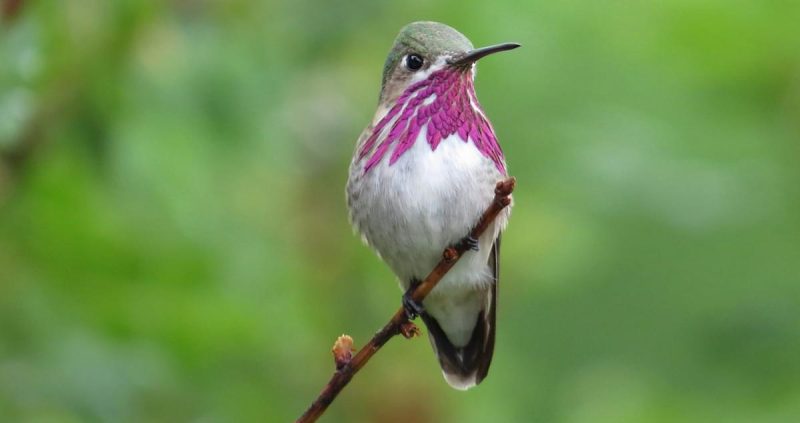
The Calliope Hummingbird is another rare visitor to North Dakota, recognized as the smallest bird in the United States. Adults measure just 2.8 to 3.3 inches in length, with a wingspan of 4 inches, making them even tinier than the Ruby-throated. Males are especially distinctive, with streaked magenta throat feathers that flare outward like rays, while females are mostly green above and white below with some buffy tones.
Despite their small size, Calliope Hummingbirds are remarkably tough, breeding in high mountain meadows of the western United States and migrating long distances to Mexico. Their hovering flight is delicate yet controlled, and their rapid wingbeats create a faint buzzing sound. Males perform courtship dives, flashing their iridescent throats to attract females.
Their diet consists primarily of nectar from tubular flowers, but they supplement it with small insects and spiders. Calliopes are less aggressive than Rufous Hummingbirds, but they can still defend a good feeding area when necessary. They rely on both wildflowers and artificial feeders for energy during migration.
In North Dakota, Calliope Hummingbirds are considered uncommon and irregular. Most reports occur during migration seasons, particularly in late summer. Backyard birders sometimes attract them with sugar-water feeders, but their small size and brief stay make encounters special for bird enthusiasts in the state.
Broad-tailed Hummingbird (Selasphorus platycercus)
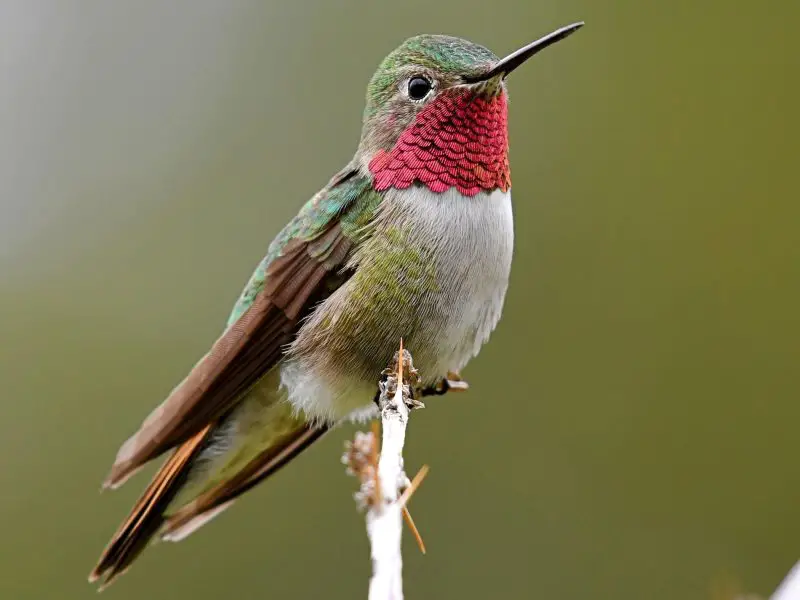
The Broad-tailed Hummingbird is a very rare visitor to North Dakota, with only a handful of records. This species is best identified by the male’s shimmering rose-colored throat and the metallic trilling sound made by its wings in flight. Females and young birds are green above with pale undersides and spotted throats, making them harder to distinguish from other species without close observation.
Broad-tailed Hummingbirds are medium-sized for the family, measuring around 4 inches in length with a wingspan of 5 inches. Their long tails and distinctive flight sounds help birdwatchers pick them out among other hummingbird species. Males often perch in open areas to watch over feeding territories, where they aggressively defend nectar sources.
This species breeds mainly in the western United States, particularly in mountain meadows and forest openings. They are adapted to cooler climates and can withstand colder nights by lowering their body temperature in a state of torpor. Their diet is composed of nectar from wildflowers and small insects that provide protein.
In North Dakota, Broad-tailed Hummingbirds are considered accidental migrants. They may show up during late summer or fall, typically at feeders or wildflower patches. Birders lucky enough to see one should note the unique wing trill, which is one of the best clues for identifying this rare visitor in the state.
Black-chinned Hummingbird (Archilochus alexandri)
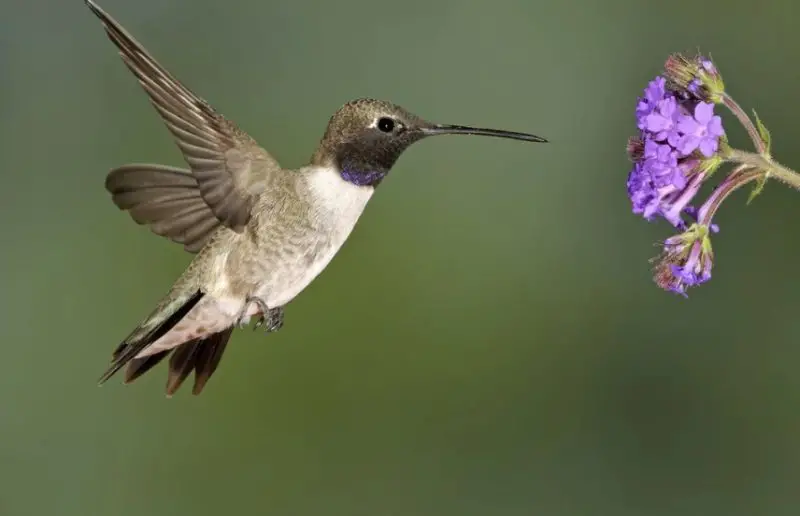
The Black-chinned Hummingbird is another rare stray in North Dakota, with only a few documented sightings. Adult males are identifiable by their black throat that shimmers violet in the right light, paired with a metallic green back. Females are more subdued in color, with pale underparts and faint streaking. Their relatively plain appearance can make them tricky to identify compared to the brighter Ruby-throated Hummingbird.
This species measures about 3.25 inches long with a wingspan of 4 inches. Their flight is rapid and agile, and their calls are higher-pitched than those of other hummingbirds. Males often hover in display arcs during courtship, producing distinctive sounds with their wings and tails.
Black-chinned Hummingbirds are primarily found in the southwestern United States, where they thrive in deserts, river valleys, and urban gardens. They feed on nectar from native flowers as well as sugar-water feeders. Insects such as gnats, mosquitoes, and tiny spiders make up the protein portion of their diet.
In North Dakota, they are considered extremely rare vagrants, usually spotted only during migration. Birders should look for them at hummingbird feeders in late summer or early fall, although confirmed records remain scarce. Their occasional presence highlights the unpredictability of hummingbird migration in the Great Plains.
Best Time and Places to See Hummingbirds in North Dakota
Hummingbirds in North Dakota are most commonly seen from late May through September, with the Ruby-throated Hummingbird being the main species present. They arrive in spring as flowers bloom and depart in early fall for their long migration south. Rare visitors like the Rufous, Calliope, Broad-tailed, and Black-chinned Hummingbirds are typically observed in late summer and fall when migration brings unexpected wanderers into the state.
The best places to see hummingbirds include gardens, woodland edges, prairies, and river valleys, where nectar-rich flowers grow in abundance. Backyard feeders filled with sugar-water (a mixture of four parts water to one part sugar, without dye) are also excellent attractants. Birdwatchers often report sightings around natural wildflower patches and in rural communities with active feeding stations.
Some of the top spots for hummingbird observation in North Dakota include Theodore Roosevelt National Park, Lake Sakakawea State Park, and various prairie preserves across the state. These areas provide rich food sources during migration. While hummingbirds are not as numerous here as in southern or western states, dedicated birders can still enjoy rewarding encounters during the migration season.
FAQs about Hummingbirds in North Dakota
What is the most common hummingbird in North Dakota?
The Ruby-throated Hummingbird is the only species that breeds regularly in North Dakota, making it the most common and widespread hummingbird in the state.
Do hummingbirds stay in North Dakota year-round?
No, hummingbirds are migratory and only spend the warmer months in North Dakota. They typically arrive in May and leave by September.
How can I attract hummingbirds to my yard in North Dakota?
You can attract hummingbirds by planting nectar-rich flowers such as bee balm, columbine, and trumpet vine. Hanging sugar-water feeders also helps, as long as the mixture is kept fresh and free from mold.
When is the best time to spot rare hummingbirds in North Dakota?
Rare species like Rufous and Calliope Hummingbirds are most likely seen during late summer and early fall migration, usually from July through September.
Are hummingbirds protected in North Dakota?
Yes, all hummingbirds are protected under the Migratory Bird Treaty Act, which means it is illegal to harm, trap, or keep them in captivity. Birdwatching and feeding, however, are encouraged.

